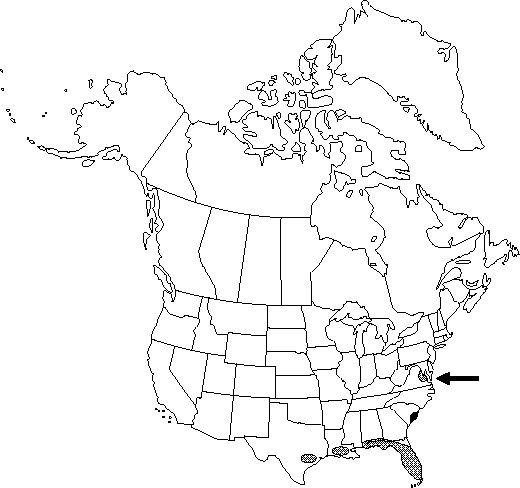Boehmeria nivea
Voy. Uranie 12: 499. 1830.
Shrubs or subshrubs, 2(-3) m. Leaves alternate. Leaf blades broadly ovate to nearly orbiculate, 8-15 × 5-12 cm, abaxial surface densely white-tomentose, adaxial surface slightly scabrous. Inflorescences panicles of moniliform (beaded) clusters, branches not leafy at apex; staminate flowers in proximal leaf axils, pistillate flowers in distil axils. Achenes compressed or lenticular, ovoid or ellipsoid, ca. 1.5 × ca. 0.9 mm, pubescent with straight or slightly curved hairs, uniformly smooth; seeds not conspicuous in outline, corky tissue absent.
Phenology: Flowering late summer–fall.
Habitat: Roadsides, waste places, vacant lots, cultivated fields, along Atlantic and Gulf coastal plains
Elevation: 0-200 m
Distribution

Introduced; Ala., Fla., Ga., La., S.C., Tex., Va., Central America, Asia.
Discussion
Boehmeria nivea, ramie, is an important source of fiber in Asia and was introduced into the United States in 1855 as a commercial crop. The fibers are exceptionally strong but difficult to extract.
Selected References
None.